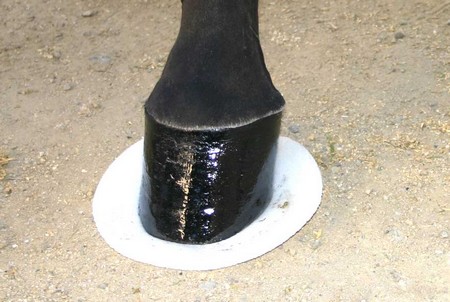The hoof
The hoof is the protective outer layer of the horse’s foot, consisting of the hard outside wall, and the sole and frog underneath. While it is attached to the delicate bone structure of the foot, the hoof itself contains no blood supply or nerves, which is why it is possible to hammer nails and apply hot iron shoes to it without causing the horse any pain.
Diet for good hoof growth
A well-balanced diet directly reflects on the condition of the hoof. In most horses, a general mix of vitamins, minerals and good-quality forage should be enough to maintain good hoof quality. Some nutrients have been singled out for helping to promote strong hoof development, such as biotin and DL methionine, both of which can be bought as separate supplements from feed stores. There are also many hoof dressings available-some are purely cosmetic and have no effect on development; more useful products are either oil based or contain silicone or wax.

Shoeing
The most important way to care for your horse’s feet is to visit a professionally trained farrier. Because all horses use their bodies slightly differently, the farrier will trim and balance the foot to support the horse’s movement. The shoes will be fitted by either hot or cold shoeing. For hot shoeing, each shoe is heated in a furnace and held for a short time against the hoof. This leaves an imprint that shows the farrier what adjustments to make so that each shoe makes the best possible fit to each hoof. Because the horse’s hoof continually grows, the horse will need to be shod approximately every six weeks. For the same reason, the unshod horse also needs regular farriery attention to ensure that the shape and condition of the hoof is maintained.
Daily care
Daily hoofcare involves picking out the horse’s feet with a hoof pick to remove dirt and stones, checking the condition of the shoe for wear, inspecting the sole for any evidence of punctures or bruising caused by stepping on sharp stones or a nail, and feeling for heat as a warning of infection or laminitis.
Abscesses can grow quickly inside the foot and cause immediate lameness. At the first sign of a puncture wound, no matter how small, the hoof needs to be dressed with a poultice and bandaged for at least 24 hours to draw out any infection.